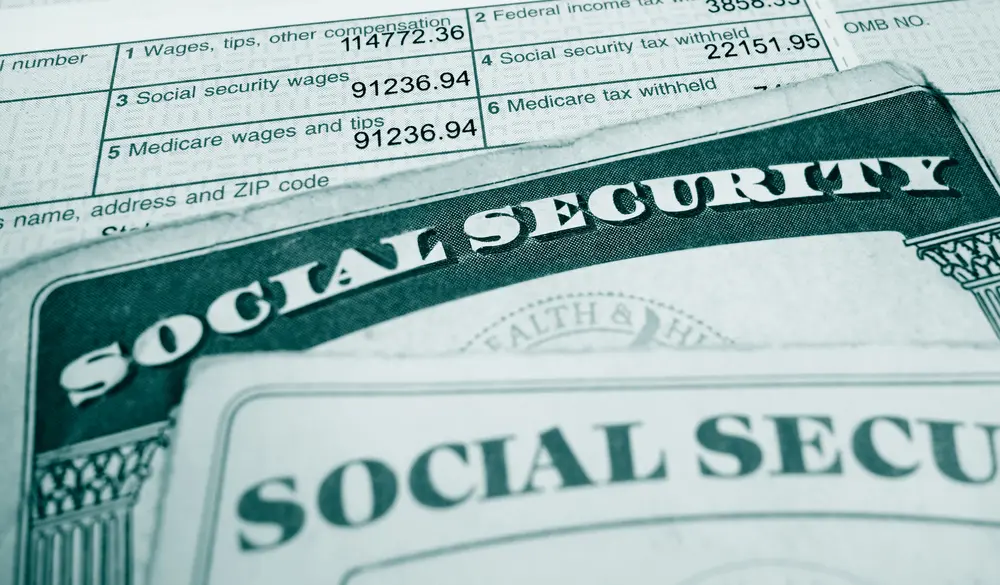Social Security disability benefits are a lifeline for many Americans who cannot work due to a disability. This article will examine the rules governing the Social Security benefits for disability for individuals aged 50 and above. Given that the Social Security Administration (SSA) has specific rules for people within this age group, understanding them is crucial for anyone needing to claim Social Security disability benefits in the future.

Deciphering Social Security Disability
To begin, it’s important to understand what Social Security Disability Insurance (SSDI) benefits are. SSDI is a program run by the SSA that provides income to people who cannot work due to a disabling medical condition. This supplemental security income is different from Supplemental Security Income, which is a needs-based program for low-income individuals who are elderly, blind, or disabled.
The core concept of SSDI revolves around the inability to perform a substantial gainful activity (SGA), which means you cannot earn a certain monthly income due to your disability. The precise amount for SGA changes each year and varies based on the type of disability. As of my knowledge cutoff in September 2021, the SGA amount for a non-blind individual was $1,310.
To be eligible for SSDI benefits, you must have earned sufficient work credits over your working life, and part of these credits must have been earned recently. The number of credits needed depends on your age when you become disabled. For most people, you need to have earned 20 credits in the last 10 years ending with the year you become disabled.
Age’s Influence on Disability Assessment
Interestingly, age plays a significant role in determining eligibility for disability benefits. The SSA considers age because it recognizes that older individuals may find it more difficult to adjust to new work due to their disability. This consideration comes into play primarily for people aged 50 and over.
The SSA uses various age categories in its disability evaluation process. For instance, individuals closely approaching advanced age (50-54), advanced age (55-59), and closely approaching retirement age (60-64) have different considerations when it comes to their disability evaluations.
For individuals aged 50 and over, the SSA acknowledges that their age and limited education and work experience could seriously affect their ability to adjust to new work. This is where “grid rules” come into play, which we’ll explore more in the following sections.
These first few sections serve as a foundation for understanding the complexities of the Social Security disability rules, especially for those over 50. Continue reading for a more detailed exploration of the grid rules, the importance of medical and vocational evidence, and much more.
Remember, the SSA’s rules and procedures can be complex. It is always a good idea to consult with a professional, such as a disability attorney, who can provide a free consultation to help navigate these rules.

The Grid Rules
The Grid Rules, officially known as the Medical-Vocational Guidelines, serve as a framework the SSA uses to determine if an individual is disabled. They consider an applicant’s age, marital status, education, work experience, and residual functional capacity (RFC). The latter measures the most you can do despite your limitations from a medical condition.
For those aged 50 and over, these grid rules come into play in a more beneficial way. The SSA recognizes that individuals in this age group may face challenges in finding new employment due to limitations from their medical conditions. Consequently, the grid rules may allow for a disability finding, even if the claimant can perform some type of work.
While the specifics of grid rules can be complex, understanding their general function can be invaluable for those navigating the social security disability process after age 50. As always, seeking advice from an SSDI professional who can guide these intricate matters is beneficial.
The Importance of Medical and Vocational Evidence
When filing a disability claim, submitting adequate medical evidence to support your case is important. This could include medical records, reports from your treating doctors, and any results from medical tests. Providing comprehensive medical evidence can demonstrate the severity of your condition and how it limits your ability to work.
Vocational evidence also plays a crucial role in the disability determination process. Your work history will be evaluated, including the skills you’ve acquired and the physical and mental demands of your past relevant work. This evidence helps determine whether you can return to your past work or whether there are other jobs in the national economy you can perform, despite your medical condition.
Special Rules for Claimants Over 50
The SSA has special rules called work incentives in place for those who are “closely approaching advanced age” (50-54) or of “advanced age” (55 and over). The acknowledgment is that these individuals may find it more difficult to adapt to new work if they’ve been out of the labor market for a while or have limited skills or education.
These special rules come into play when applying the medical-vocational guidelines (grid rules). For instance, if you’re between 50 and 54, have limited education, and can’t perform your past work due to a severe medical impairment, you could be considered disabled under the grid rules.

Social Security Disability and Retirement Benefits
At the age of 62, you become eligible for Social Security retirement benefits. However, if you’re already receiving SSDI benefits when you reach your full retirement age, your disability benefits automatically convert to retirement benefits, but the monthly benefits amount remains the same.
Understanding the connection between disability and retirement benefits can be beneficial, especially as you plan for your future financial needs. It’s worth noting that the full retirement age is gradually increasing and will reach 67 for those born in 1960 or later. If you’re unsure about your full retirement age, the SSA provides a handy retirement age calculator.
As we delve further into the specifics of social security disability rules after age 50, we must remember that everyone’s situation and family benefits are unique. Therefore, while this guide is comprehensive, consulting with a professional is always recommended.
Navigating the Application Process for Social Security Disability
The application process for social security disability can seem daunting, especially when dealing with the challenges of a medical condition. Knowing what to expect can help to reduce some of the stress involved.
First, it’s important to understand that you can apply for disability benefits online, over the phone, or at a local Social Security office. The SSA will need detailed information about you and your medical condition, including your medical records, work history, and education level.
Following your application, the Disability Determination Services office in your state reviews your case. They may request additional medical evidence or schedule you for a medical exam.
During this process, remember that your application’s strength largely depends on the quality of the medical and vocational evidence you provide. You may also consider seeking assistance from a disability attorney or advocate who can guide you through the process and potentially increase your chances of approval.
Considering Potential Pitfalls and Overcoming Them
Some potential pitfalls could hinder your disability claim. Being aware of these can help ensure you are well-prepared to address them.
Insufficient medical evidence is a common reason why disability claims are denied. Make sure you provide comprehensive medical records that clearly demonstrate your disability and how it impacts your ability to work.
Secondly, your ability to perform your past work can influence your disability claim. If the SSA determines you can do your past relevant work, you won’t be considered disabled. If you cannot do your past work, the SSA considers your age, education, and work experience to determine if you can do other work.
Thirdly, age can be both a blessing and a curse when applying for disability benefits. While certain rules favor older workers receiving disability benefits, remember that your disability must be expected to last at least one year or result in death.
Lastly, failing to follow prescribed therapy can also lead to a denial of your claim. If a doctor prescribes treatment and you don’t follow it without a good reason, the SSA might deny your claim.
Understanding these potential pitfalls can make you better equipped to tackle the process. Consulting with a professional for a free consultation can further strengthen your case and provide personalized advice.
As we explore the unique rules for social security disability after age 50, it’s important to note that these rules and processes can change. Always refer to the most recent information from the SSA, and consider seeking professional advice for your unique situation.
Wrapping Up
Understanding the social security disability rules after age 50 can be complex. These rules are in place to provide support for older workers who face unique challenges in the workforce due to their medical condition qualifying disability. The SSA acknowledges these challenges and has guidelines in place to account for the limitations and obstacles that older applicants may face.
Whether you’re applying for social security disability benefits or you’ve been receiving benefits and are approaching retirement age, it’s crucial to be aware of the regulations and processes that impact your situation. Staying informed can help ensure you’re taking full advantage of the social security retirement benefits that you’re entitled to.
Remember, while this guide provides a comprehensive overview, your situation is unique. Consider contacting a disability advocate or attorney who can offer personalized guidance. The right support can make all the difference in navigating the intricacies of social security disability rules, benefits, and application processes.
Frequently Asked Questions
Is it easier to get disability if you’re over 50?
Yes, it can be easier to get disability if you’re over 50. The SSA has grid rules that can favor older workers, particularly those with limited education and work skills.
What is the 55 rule for disability?
The “55 rule” refers to the SSA’s special considerations for individuals aged 55 and over. The SSA may find these individuals disabled if their medical condition prevents them from performing their past work and they have limited skills or education to perform light work.
At what age does Social Security Disability stop reviewing?
The frequency of medical reviews can decrease as you age. Once you reach the age of 55, reviews typically occur every seven years unless your condition is expected to improve.
Is it easier to get a disability at age 55?
Getting a disability can be easier at age 55 due to the SSA’s grid rules and special considerations for “advanced age.”
Remember that this information is subject to change and may vary based on individual circumstances. For the most accurate and up-to-date information, refer to the Social Security Administration or consult a professional.
How does my work history impact my disability claim after age 50?
Your work history plays a crucial role in your disability claim. The SSA will examine your past relevant work to determine if you can still perform any of those jobs despite your disability. Moreover, your work history contributes to your work credits, determining your eligibility for social security disability benefits.
How does reaching full retirement age affect my disability benefits?
When you reach your full retirement age, your social security disability benefits automatically convert into retirement benefits. However, the amount remains the same. It’s important to understand your full retirement age, which depends on your birth year, as it impacts when your social security administration benefits transition.
What special rules apply to disability claimants over 50?
The SSA applies “grid rules” for claimants over 50, considering factors like age, education, work history, and medical condition. For instance, a claimant approaching advanced age (50-54) or younger person of advanced age (55 and above) with limited education and unskilled work history may qualify for disability benefits, even if they can perform light or sedentary work.
How does my education level affect my disability claim after age 50?
Your education level is a significant factor considered under the SSA’s grid rules. Lower levels of education can make it easier to qualify for disability benefits, especially if you’re over 50. This is because the SSA assumes it may be more difficult for you to adapt to new forms of work.
What if I have insufficient medical evidence to support my disability claim?
Insufficient medical evidence can lead to the denial of your claim. It’s essential to provide comprehensive medical records showing your disability and how it affects your ability to work. If there’s insufficient evidence, the SSA may deny your claim or require you to undergo a medical examination to gather the necessary information.
Remember, your unique situation may affect how these rules and processes apply to you. Always refer to the most recent information from the Social Security Administration, and consider seeking professional advice to navigate these complexities.

